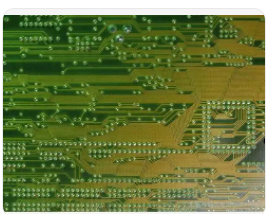Nowadays, PCB design is widely used in all walks of life. From communication equipment to medical equipment, from small mobile phones to the Tiangong Shenzhou flying in space.
Rigid circuit board, PCB (Printed Circuit Board), the Chinese name is printed circuit board, also known as printed circuit board, is an important electronic component, a support for electronic components, and a carrier for electrical connection of electronic components. Because it is made by electronic printing, it is called a "printed" circuit board.
FPC, also known as "Flexible Printed Circuit Board" (Flexible Printed Circuit Board), is a printed circuit made of a flexible insulating substrate. Flexible circuits provide excellent electrical performance, can meet the design needs of smaller and higher-density installations, and also help reduce assembly processes and enhance reliability. Flexible circuit boards are the only solution to meet the miniaturization and mobile requirements of electronic products. It can be bent, wound, and folded freely, can withstand millions of dynamic bending without damaging the wire, can be arranged arbitrarily according to the space layout requirements, and can move and expand in three-dimensional space, so as to achieve the integration of component assembly and wire connection The flexible circuit board can greatly reduce the volume and weight of electronic products, and is suitable for the development of electronic products in the direction of high density, miniaturization and high reliability.

Because of the different uses, rigid and flexible PCBs are not the same when designing. Then, what factors need to be considered when designing?
Flexibility
Using thinner laminates and wider wires can better increase the possibility of withstanding more cycles of bending. For a large number of bending cycles, single-sided flexible PCBs generally show better performance.
Pad
Around the pad, there is a change from flexible material to rigid material. This area is easy to damage the conductor. Therefore, the pads should be avoided in areas that are prone to bending.
wire
In contrast, flexible PCBs have poor heat dissipation capabilities, so the wires must have sufficient width.
shape
The inner corners should be round, otherwise it will cause the board to tear. The wire terminated at the plated through hole or component mounting hole should be smoothly searched into the pad. Any change from a straight line to an image angle or a different line width must be as smooth as possible. Sharp corners will naturally concentrate stress and cause wire failure.
In short, when designing, the following points need to be kept in mind:
1. The three-dimensional space of the flexible printed circuit is very important, because the application of bending and flexibility can save space and reduce the board layer.
2. Compared with rigid boards in PCB layout and design, flexible boards have lower tolerance requirements and allow a larger tolerance range.
3. Because the wings can be bent, they are designed to be slightly longer than required.